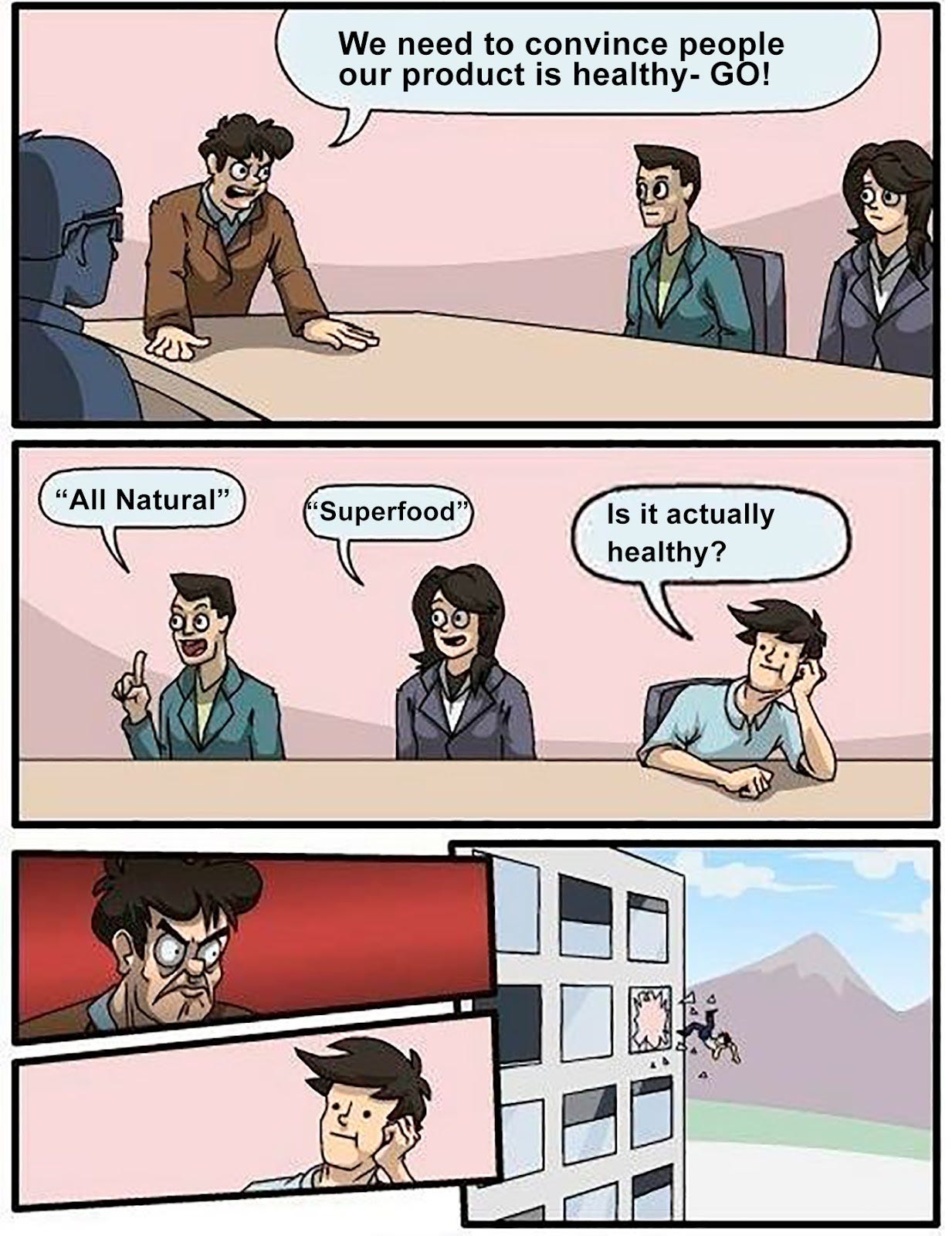Welcome back to the Broiler Room and this week we’re exploring the tactics massive food corporations use to make you believe they’re a smaller, healthier brand.
Grocery shopping can be a chore. You gotta make a list, find time to go, have some kind of budget, and once you’re standing in front of the wall of options, you try to make the best decisions possible to feed yourself. Food companies sure as shit don’t make it any easier either. Say you want a box of mac and cheese for a quick lazy meal but Kraft Foods seems like one of those giant, evil food companies you don’t wanna support. Maybe you reach for Annie’s instead- except they’re owned by the same fucking company. Unfortunately this isn’t a unique situation. Major food producers realized consumer spending was shifting more towards smaller companies that were health-adjacent so they bought all of them.
Blame the rise of the internet, mommy Facebook groups, those pesky vegans, or the Freedom of Information Act, but food companies that had been happily operating in the shadows for decades were starting to have very public and equally embarrassing business practices exposed. So they bought smaller businesses with better reputations to hide behind. Consumer spending trends have been more focused on organic, healthy branded foods. So much so that 2021 was the biggest year for “healthy” food trends yet. And those supervillain food companies were already two steps ahead of you, gobbling up their competitors and eliminating your choice as the consumer. FREE MARKET BABY!!
These companies have adapted incredibly well to distracting news cycles when they’re in trouble. Remember just a couple months ago how everyone was outraged about the M&Ms rebrand and Mars sold this as a “more dynamic, progressive” change? Well it’s not coincidence that Mars is facing their second major lawsuit in two years over unethical child labor practices on the Ivory Coast AND misleading consumers. But ya know, everybody was too busy whining about how they couldn’t fuck the green M&M anymore to notice.
On top of that, food companies pull all kinds of fuckery to sell consumers their products. But all these “green” terms have definitions you should understand to prevent an accidental up-sale when you’re grocery shopping. Here’s the deal: organic foods are grown and produced without using most conventional pesticides, synthetic fertilizers, sewage sludge, irradiation, or genetic engineering. Before products can be officially labeled as organic, a third-party certifier inspects the farm annually to make sure all the Department of Agriculture’s organic standards are being met here in the US. All that costs a shitload of money, so that’s a reason why organic food tends to be more expensive. And while some small farms may grow all their grub organically, they may not be able to afford the certification. Know that shit. Salt and water are the only things that can NOT be labeled organic so if you see someone claiming their water is organic, laugh in their fucking face. Here’s a breakdown of the green name game:
100 Percent Organic: This product or produce was found by a third party to contain only organic ingredients. Look for the USDA seal to know that shit is legit.
Organic: This is 95 percent organic and that other 5 percent of stuff can only be items from a list of USDA approved ingredients. The USDA seal will be here too.
Made With Organic Ingredients: This means a product contains at least 70 percent organic ingredients and that stuff will be marked (usually like this*) somewhere on the label.
Natural: This shit means NOTHING when it comes to fruits, vegetables, grains, and legumes. Legally you can throw this word on anything (and they do) to make it seem healthy or environmentally friendly and it doesn’t mean jack shit because it’s is totally unregulated.
Also, watch out for assholes that use “organic” in their product or company name to confuse the fuck out of people. Take just a second and read labels carefully so you don’t get played by these bitches.
So what the fuck can you do? Seems almost impossible to nourish yourself while not funding these cartoonishly evil companies right? Well first, buy more produce. There’s this kickass website full of free recipes and apparently their cookbooks are popular too. Food conglomerates do the most of their R&D on their boxed goods since those have the highest return in the marketplace. So buying more fruits and veggies, especially bought locally at a farmer’s market or CSA, is an uppercut to Phillip Morris- yes the cigarette company- who produces most of the food you see on grocery shelves. Second and far less sexy, we can put pressure on our elected representatives to regulate these food terms and protect consumers. It seems daunting if not impossible going up against the massive food lobbies but there’s proposed legislation to regulate ‘natural’ for personal care products, why can’t we do that for food?
Thanks for joining us in The Boiler Room. Tomorrow the paid supporters get week 2 of SALAD BOOT CAMP with TWO RECIPES. If you’re not already a member, there’s an easy way to fix that.
We’ll see y’all next week but in the meantime, good luck with the groceries. Stay frosty out there.
Matt and Michelle











can you direct us to a larger, more readable version of that great chart showing which big megaconglomerates own which brands now? i want it on my kitchen bulletin board to consult when i make up my weekly grocery lists — THANKS❣️
Thanks Matt and Michelle for all the great info you keep putting out, about our food. Another aspect of our food supply chain to consider is how Big Food (the top 4 companies) control the shelves of grocers and ultimately what we buy and eat. (Read Alan Guebert.) All the more reason to shop local and small.